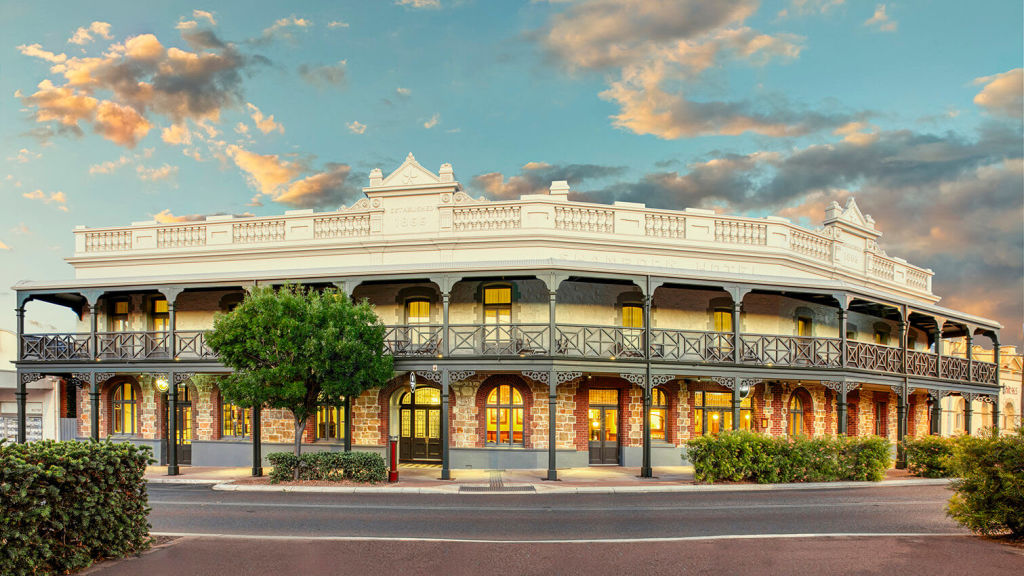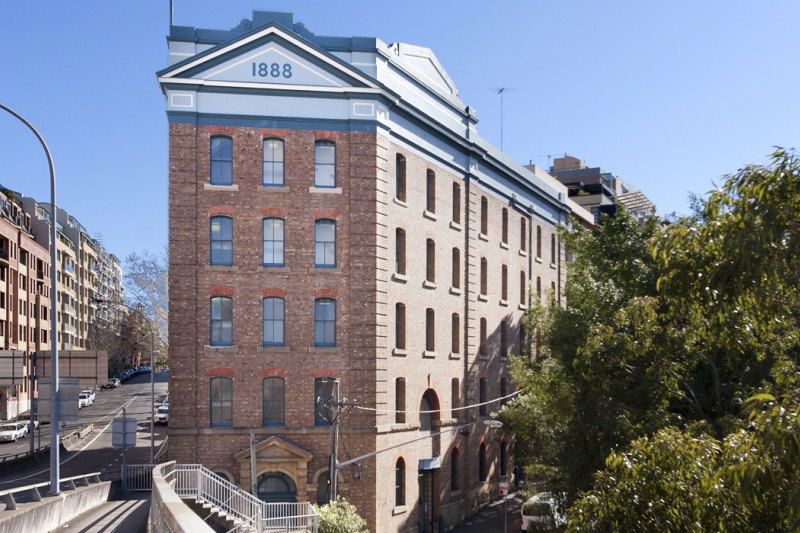
Hotels in heritage buildings have the "story" local tourists are looking for
They’ve long been active in vintage real estate conversions but could it be in this staycation-era of Australians spending leisure time in our own big backyard that hoteliers are showing up as gallant champions of built heritage?
While NSW’s state chapter architecture awards won’t be announced until early July, already three fascinating historic buildings from two other states that have been reborn as singular hotels, have won the right to go up against each other in the national awards later this year.
One is in former jail warder’s cottages in the tourist hot zone of Fremantle in Western Australia.
Another, Moss 25, is the second stage of a glamorous sandstone warehouse makeover in the charming colonial waterfront of Hobart’s Salamanca Place, Tasmania.
The third is one of those grand old Victorian-era country hotels at Northam, gateway to the vast wheatbelt east of Perth, that the Dome Group has added to its expanding regional portfolio of boutique accommodations and cafes, mostly housed in salvaged old buildings.
According to Patrick Prendiville, director of the W1 Hospitality group that redeveloped the 1851 limestone cottage group near the decommissioned Fremantle prison into Warders Hotel, what each of these properties has in abundance is one of the key ingredients to visitor magnetism. They all have “story”.
“From a business perspective,” Mr Prendiville said. “Tourism is always looking for a story. And, having old buildings as a facade to a venue is much better than making a new building. It’s more attractive to visitors.”
The conversion of the “crumbling” terraces that opened in 2019, with 11 comfortably modern rooms and a large Asian restaurant in a new structure behind, was not without its trials because W1 Group and its architect, Matthew Crawford, had to negotiate changes at federal government level.
So close to the world heritage-listed prison complex, “Warders is a national heritage asset and it was all very complex”, Mr Prendiville explained.
While he reports “a few grey hairs” from the process, and tells that “doing anything in hospitality and tourism is a risk”, with Fremantle “a unique drawcard because it is a harbour town with a significant stock of heritage buildings”, Warders is already proving its pulling power.
“The retired generations — the nomad travellers — are always looking for new places to stay.”
Continuing an optimistic corporate mantra of “if you build it, they will come”, the W1 Group is undertaking the conversion of a second group of nearby warders’ cottages “because we believe Fremantle is still evolving”.
Meanwhile, the peripatetically entrepreneurial Dome Group in WA, led by Nigel Oakey, who has a passion for reviving the glories of regional inland towns, found another spectacular squattocracy-scaled hotel in Northam to restore as bijoux accommodation.
The Farmer’s Home Hotel, which had its genesis as a general store in 1866, is another storied building as it’s been associated with a lineage of politician and publicans, including an early premier, and a two times lord mayor of Perth.
Enlisting spaceagency architects to bring this imposing building of stone, jarrah, leadlight and hand-blown light fittings back to life as a 16-room hotel, the creative double act won the main 2021 WA Heritage Award, along with an award for commercial projects.
Two years ago, the same cohort’s spectacular makeover into a 22-suite hotel of an old mill, Premier Flour Mill at Katanning, won a similar clutch of citations and a lot of national attention.
In Hobart in the 1970s, Greek immigrants Peter and Dennis Behrakis set up a fruit wholesaling business in the near-derelict precinct of Salamanca.
From this unpretentious start they initiated a transformation of the unique Georgian neighbourhood that is now one of Tasmania’s must-do attractions.
Over the past few years, the Behrakis Group has advanced the program even more by funding the glorious restoration of firstly, the architecturally awarded hotel Moss 39, which was expanded last year into a discrete and slightly higher building behind, Moss 25.
The linked properties make the most of the antique fabric, and both have been given a super schmick overlay of contemporary appointment that celebrates many shades of green — thus “Moss” — by the laudable heritage specialists Circa Morris-Nunn Chua.
Ganche Chua says the renovation began by exposing antique sandstone and timber which “straight away reveals the history of the site as textural and special; as something that’s impossible to replicate”.
As a whole, he says “it’s a tourism project that showcases what is unique about Tasmania, our natural environment and our (built) heritage and cultural history. Heritage is what we’ve got in abundance”.
As sophisticated as the old-new Moss hotels now are, Chua agrees “it’s all about storytelling and the narrative is very important. At Moss, the story is embedded in the stone, the timber and the site. But although it talks to you on an elemental level, it’s also comfortable. And, that’s what makes it successful”.
Successful? Well, the figures don’t lie. When Tasmania emerged from its lockdown isolation of last year and mainlanders hungry to get even a little way offshore flew south they targeted the Moss hotel in their droves.
“Once lockdown lifted, the place went nuts,” Chua reports. “It’s quite mind boggling really that the typical occupation is 95 per cent capacity.”
Get a weekly roundup of the latest news from Commercial Real Estate, delivered straight to your inbox!






